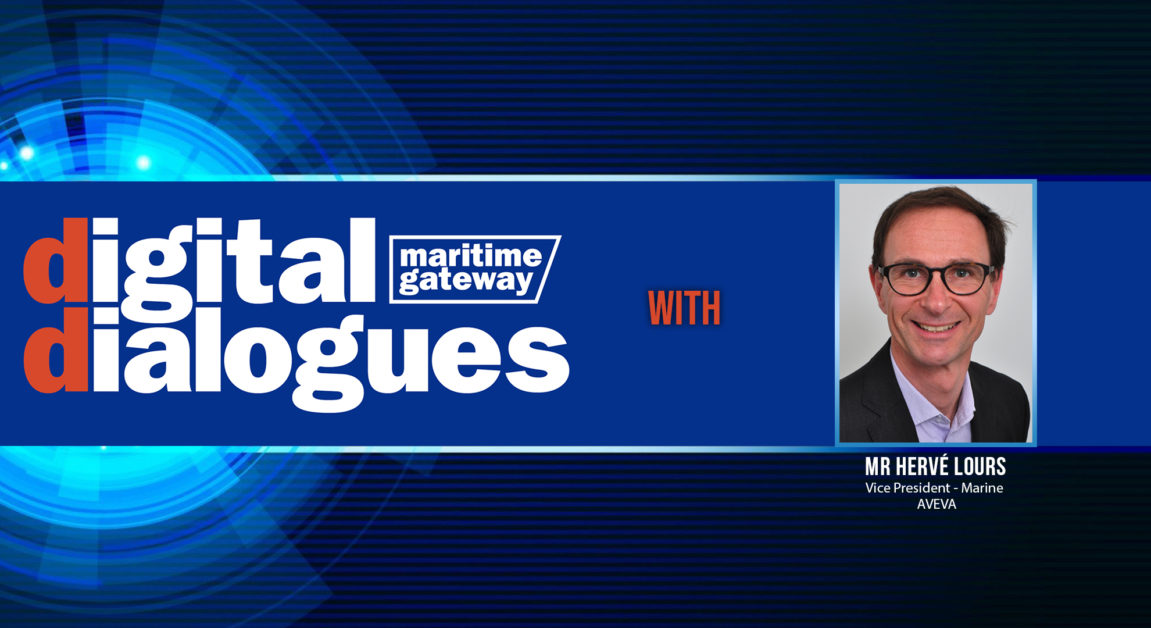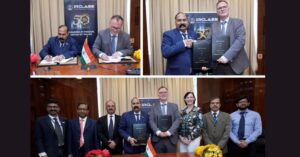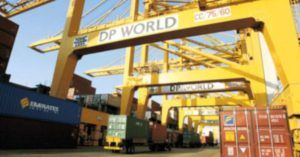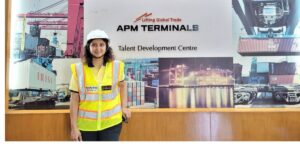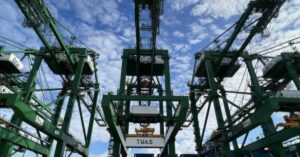AVEVA offers a complete suite of technology solutions that enable shipyards become more agile, while shipping lines can better share and analyse data from ship to shore, explains Herve Lours, Vice President – Marine, AVEVA
AVEVA is a $1.6 billion software company listed on the London Stock Exchange. It’s a leader in industrial software business, primarily focusing on gas, power and marine. AVEVA is also one of the largest software companies in the maritime sector and has some unique capabilities – this is the only software supplier in the maritime world providing a complete software suite for the entire lifecycle, starting from engineering design and moving down to operations of the shipyard and ships as well. Talking about the lifecycle, engineering and design, AVEVA is a leader in this area, with an approximate 60% market share in engineering and design software, which means we are active in most of the important shipyards. AVEVA is also the leader in the shipping sector, providing solutions to ship owners, system integrators and more than 3000 ships are using AVEVA software on-board.
One of our major partners is Schneider Electric, which is a large energy management solutions company. Approximately 20,000 ships are using Schneider Electric’s technology onboard and this partnership further broadens our market access. Also, Schneider Electric’s software suite specialized in energy management, is key to cope with the IMO regulations representing the biggest challenge in our maritime environment.
How exactly is AVEVA software used on-board ships?
We offer solutions for monitoring, control, asset performance management as well as mobility solutions for mariners.
Monitoring solutions collect any data from the ship and its environment in order to aid the captain on-board or the ship-owner on shore, to better understand the performance of the ship. These technologies are today functional on thousands of ships.
For asset performance management, we have a very powerful and fully integrated suite of software that first determines the right maintenance strategies and costs, should they be “run to fail”, “time base” or “predictive maintenance” for the hundreds of assets on-board; for assets with predictive maintenance, our software uses machine learning and AI and automatically detects any asset’s anomaly, sends an alert and a job order into our maintenance planification software for action.
This is where our mobility solutions and connected seafarer solutions come into the panorama, for enabling the maintenance operator or any other seafarer to have a better understanding of his operations and to implement any specific list of tasks pre-registered into the software. With our digitised and paperless solutions, that can work offline, the seafarer can digitally record the output of his inspection, he can generate any kind of report, he has also the convenience of introducing any information into the system as and when required.
On-board ships, traditionally a lot of paperwork is there such as maintaining manual logs, has it been completely digitized?
Yes, that’s exactly what I was mentioning before, there is still a lot of paper-work involved today. But we have the solutions available for that and we are gradually penetrating this business though it will take some time of course. We are convinced that the future is in digitally connecting assets and people so that the data is transmitted directly to the captain and remotely to the shore.
During these operations, huge data is collected – digital data which resides on the Cloud. So, how is the accessibility of the data and security of the data?
Everything is possible, you can keep the data on-board if necessary for the crew to have access to the information or you could report the data directly on-shore to the headquarters, depending on the strategy of the ship owner to decide where he wants to get the information. Mostly our clients want to get the information delivered on-shore because a lot of information is already made available on-board today, but the ship owner, who is on-shore doesn’t have access to it. A major advantage of such a system is to make the on-shore ship owner aware of the reality of the ship, which unfortunately isn’t the case today.
When it comes to using technology, maybe different softwares, different platforms might be in use onboard. So, how well the integration can be done? How compatible are your suite of solutions to plug into other softwares?
Our solutions are fully compatible. This is our company’s strategy to have vendor agnostic solutions, which have the capability to integrate with other vendor software.
Recently we acquired OSIsoft. It brings into our basket the Performance Intelligence (PI) system software that is directly related to your question. PI system is an enterprise data infrastructure solution that collects and manages data and ensures the data governance for all assets of different vendors on-board the fleet of ships. PI avoids functioning of systems in silos. It is able to organize which information is available to which vendor. At a time, systems on-board work in conjunction. Very often, there is a high interest for one OEM or one vendor to get access to the information on the other so that with information of the other, it can better contextualize information and bring additional value to the ship owner. Here the PI system enables data integration and organizes data accessibility, and this is typically the type of constraints, the type of difficulty that the ship owners run into today.
Recently AVEVA had some collaboration with International Maritime Industries (IMI). How does it help digital transformation in the maritime sector?
IMI is a very ambitious company. They want to deliver high quality connectivity products and to this extent they want to invest massively in digitization. For this they have selected AVEVA solutions full software suite including simulation, engineering design and digital shipyard. They will implement all our software in order to help in productivity savings in shipbuilding, to help in all the mobility solutions that we talked about before and also they will implement all our solutions for the modern ships. This is not a one-time deal, and we look forward to continued collaboration and to co-innovate.
Can we talk about your ship building software? What is special about this software AVEVA?
We are offering a complete suite of software that makes the shipyard much more agile by boosting productivity of all assets, in all departments: engineering, design, production, maintenance. Our suite of software is fully integrated, it means that there is no need for re-typing any information once this information has been plugged in one of our software – the input and output data will automatically be made available all along the workflow of shipyards, which means a lot of time savings, and human mistakes are avoided as you can imagine. Our software is built by ship builders for ship builders because in AVEVA a lot of our people are coming from the ship building area. It means that there will be very limited need for any customization by our clients. So, again this is savings in cost and time for the implementation of our software and of course it reduces the time for ROI.
If we move along the value chain, in production, assembly, we have a software named Digital Work Order – it is a solution that makes a bridge between high level ERP coming from AVEVA again and the workshops. It brings all the relevant information to the workshops, to the worker. The worker operating in any corner knows exactly what he has to do. He has all information with him. Also, such a type of solution reports back the timing that the worker took in order to perform the task. So, it gives back to the system the exact cost reality.With these types of systems, the management has knowledge about the real cost in manufacturing.
We talked about the mobility solutions for the seafarers and software for asset performance management on board the ships; we have exactly the same for the shipyards of course.
Another solution we are offering to the yards and ship owners is the “Digital Twin”, which will be massively implemented by our clients in the next few years. A Digital Twin is an intersection between 3 things – data, first; analytics; and third, visualization tools. Data includes engineering, design and operational data. In ships or shipyards, Digital Twin enables to observe on a single screen these data contextualized thanks to analytics and helps you to detect right away any anomaly in any of your assets, for example in your main or auxiliary engines on board.
Do these automation or digital technologies require any kind of special skillsets, either for the workforce or the crew?
Depends on the sector. If you plan to have a lot of information that flows in the ship, could be some enhancement in the competency of the crew, but we do not believe this is where the market is going, the market is going more to disclosing most of the information onshore because this is where transparency is lacking. There is a need for the ship owner onshore to get a better understanding of what’s going on the ship. The trend is more in limiting the number and the competency of staff on the ship. So, probably in the new ships that are being built, an increased number of staff will operate onshore to analyze the data coming from the vessel and probably the shipowners will need people who have a very deep understanding of what is going on the ship. So, I can easily imagine that a captain in-charge with good technical knowledge of ship will be one day transferred on shore in order to be able to analyze the data coming to shore.
We are already talking about autonomous ships sailing in future. So, how does this digital transformation adapt to the changing ship designs and autonomous ships?
I just want to say that autonomous ship is one of the use cases of digitalization, one of it only, and the autonomous ships will use a lot of monitoring and control technologies that are provided by AVEVA. We are deeply involved in such kind of technologies. So, I do not see today from AVEVA’s perspective at least, that they will require specific digital technologies for the development of autonomous ships and by the way, we are today, supplying our software to many players working on development of autonomous ships.



